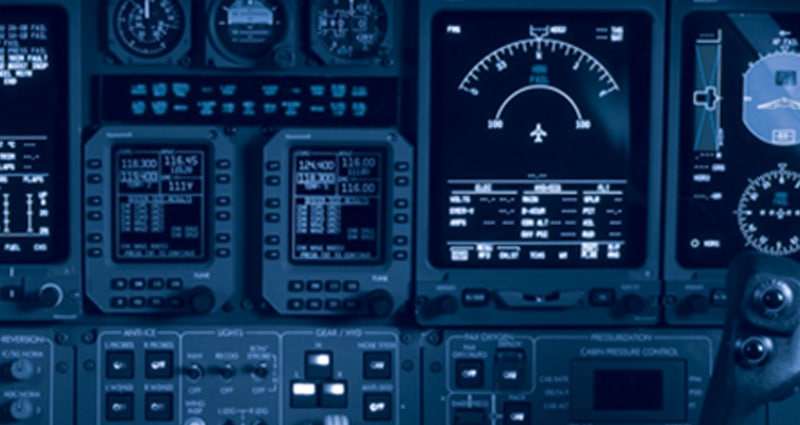Take the Fight to the Enemy: Combating Human Error is Still Our Top Challenge

A few years back, after the publication of Blue Threat: Why to Err is Inhuman, I was interviewed on the topic of human error. With the rash of human error mishaps in the news recently, I thought it might be timely to revisit the number one enemy of aviation safety and how we can get past the old adage that “to err is human.”
Q: Let’s start with the basics. What is the Blue Threat?
Dr. Kern: The Blue Threat is the internal threat – the things we do to ourselves and each other that end up sabotaging our goals and missions. The term comes from the business and military threat assessment models where the red threat is what the competition and the situation can throw at you, and the blue threat is the damaging things we do to ourselves that derail safety, projects, programs, profit and potential.
Q: Aren’t making mistakes just a part of being human?
Dr. Kern: To some degree, maybe. But just saying “to err is human” is a cop out for avoidable and correctable mistakes and gives up far too much ground. For too long, we have accepted human error as an inescapable part of our lives or tried to “manage” it after it occurs. It has resulted in unnecessary compromise of our life’s mission and goals. Recent research provides a body of knowledge that is capable of changing our performance, and our lives, for the better. This is life-altering knowledge. Applying it successfully demands a rigorous approach that results in known competencies and predictable performance. But it is well worth it.
Q: Don’t you think that “declaring war” on human error in 2002 was a little over the top?
Dr. Kern: Not at all. Every year, on average, human error results in more unnecessary death and suffering than all of the wars in the world combined. But getting beyond safety statistics, industries suffer billions of dollars in lost revenue as a direct result of preventable human error, which results in job losses for thousands. And these numbers don’t factor in the lost opportunities for progress and improvement. No, declaring a war on error was not over the top, it was long overdue.
Q: OK. How do you go about battling the Blue Threat?
Dr. Kern: The key to victory over the randomness and variability of human error is first to realize that error is only random in a group setting. When you get down to a sample size of one – you – error is both predicable and preventable. After that, it is just a matter of learning some new information and applying a set of tools. Of course, first you need to accept the fact that you are making avoidable errors and desire to change. Every program we offer at Convergent stresses this key aspect.
Q: Isn’t something this critical taught in technical training or somewhere else inside most occupations?
Dr. Kern: Oddly no, and I think I know a couple of reasons why. First, we have long assumed – incorrectly – that when we train someone to do something right, we are simultaneously training them not to do it wrong. This fundamental premise of our training programs is grossly in error and responsible for hundreds of thousands of lost lives and billions in lost revenue every year. The skill set for error prevention is unique and currently not taught anywhere except the few places where it was researched and developed over the past few years. The second reason I believe we don’t yet teach personal error control is because the world has gone brain dead on the issues of personal responsibility and accountability. These aren’t politically correct terms in some circles. Listen, no one wakes up in the morning wanting to screw up – or thinking that they are going to. If we can provide them with the knowledge and tools to recognize and prevent their personal mistakes, most people who care about their performance will do so of their own accord.
Q: How long does it take someone to get a handle on the Blue Threat?
Dr. Kern: Some results are almost immediate; others will be refined over the course of a lifetime. It is important to realize from the start that error control is far less about training than it is about understanding. Self-awareness is a personal mastery skill that encompasses many complex variables, ranging from an accurate assessment of one’s skill and knowledge to the physiological readiness to perceive, interpret, evaluate, plan and act in a tightly-coupled, error-intolerant environment. These skills are within our grasp, but they are not intuitive. They must be learned. Error control is not common sense, as many would have us believe. It is uncommon sense, yet well within our reach if we just take readily available information and apply it. This is the reason the Blue Threat program was designed and developed. If I could leave you with one thing, it would be this: Personal error control is a discipline – a way of life. And once you’ve mastered it, you will be amazed at the results and wonder why you waited so long to do something this simple and powerful.
Blue Threat is available at www.pygmybooks.com

Convergent Performance is uniquely dedicated to reducing human error in high risk environments.
http://www.convergentperformance.com/
© 2025 Convergent Performance. All Rights Reserved.
Next ArticleRelated Posts

Little Things Matter: The Lost Key of the Titanic
Ultimately, the story of the Titanic’s lost key is a call to action for aviation professionals. It underscores the need for unwavering attention to detail, robust systems to catch human error and a culture that prioritizes safety over haste.

Mitigating Risk – Amidst the Chaos
There have been more high-profile aviation accidents in the last few months than in the last few decades. As we mourn those we have lost and aim not to make assumptions before final reports are completed, we must focus, personally and professionally, on assessing the risk of something similar happening within our aviation enterprises.

